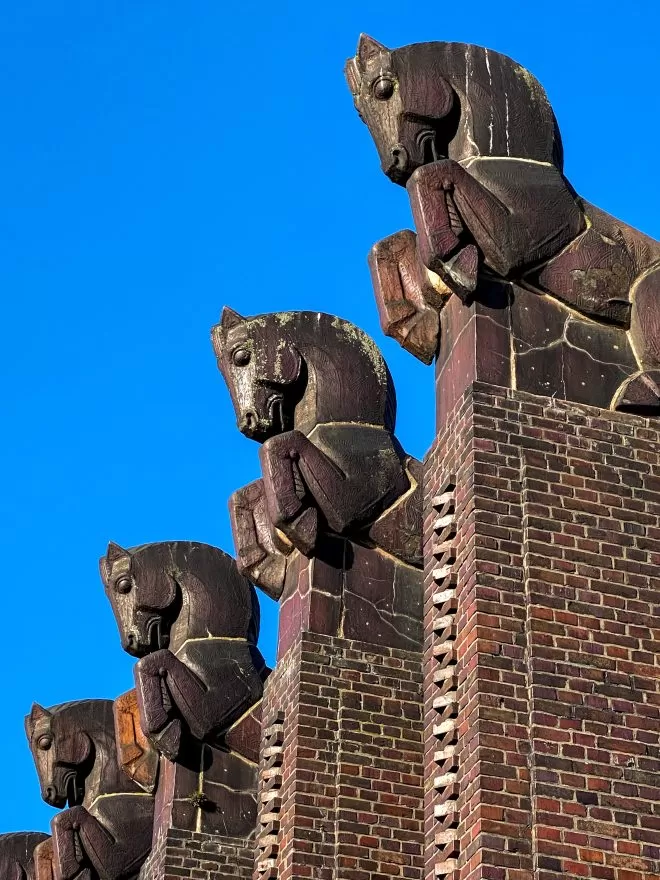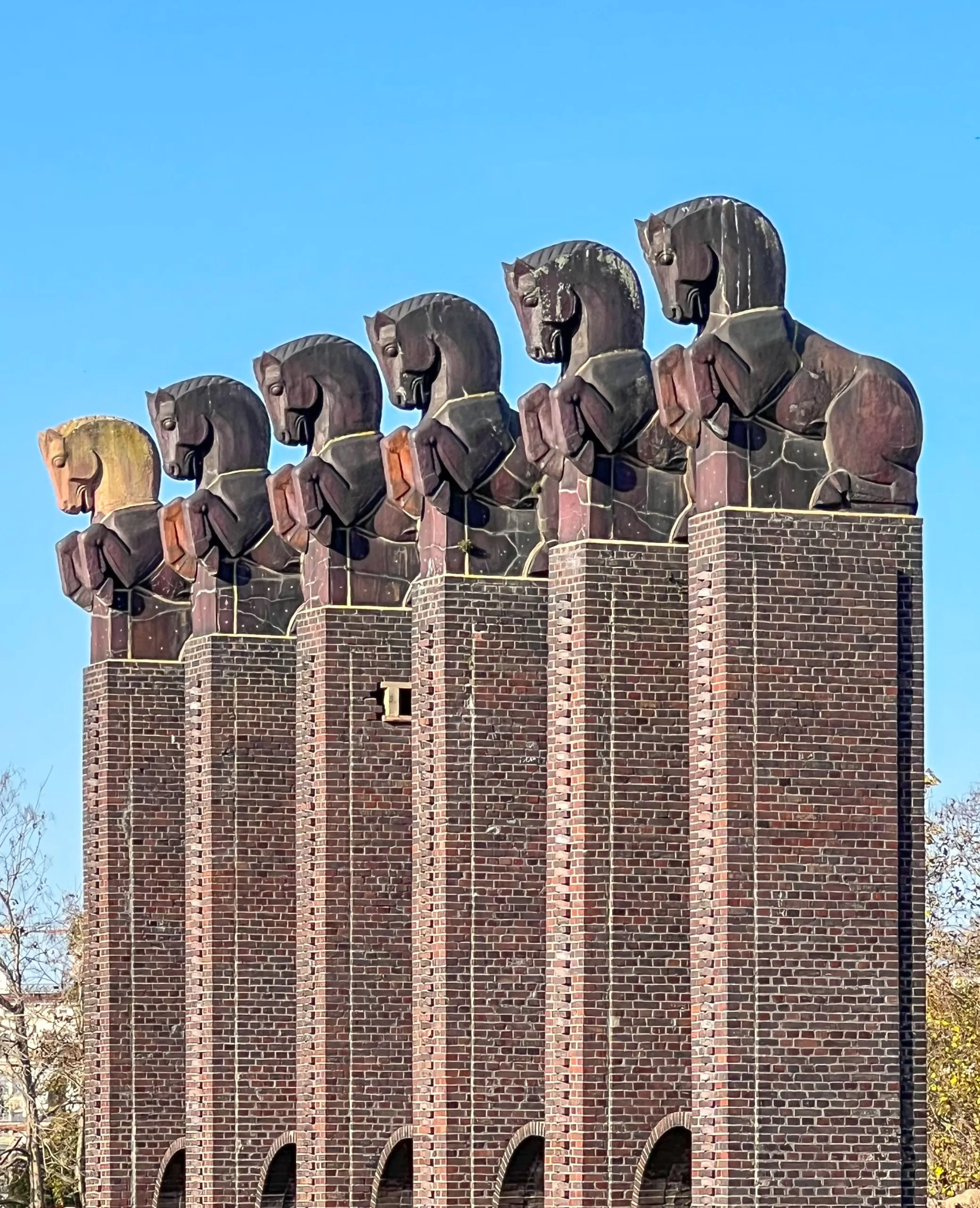
Pferdetor, 1926-1927. Design: Albin Müller. Photo: Daniela Christmann
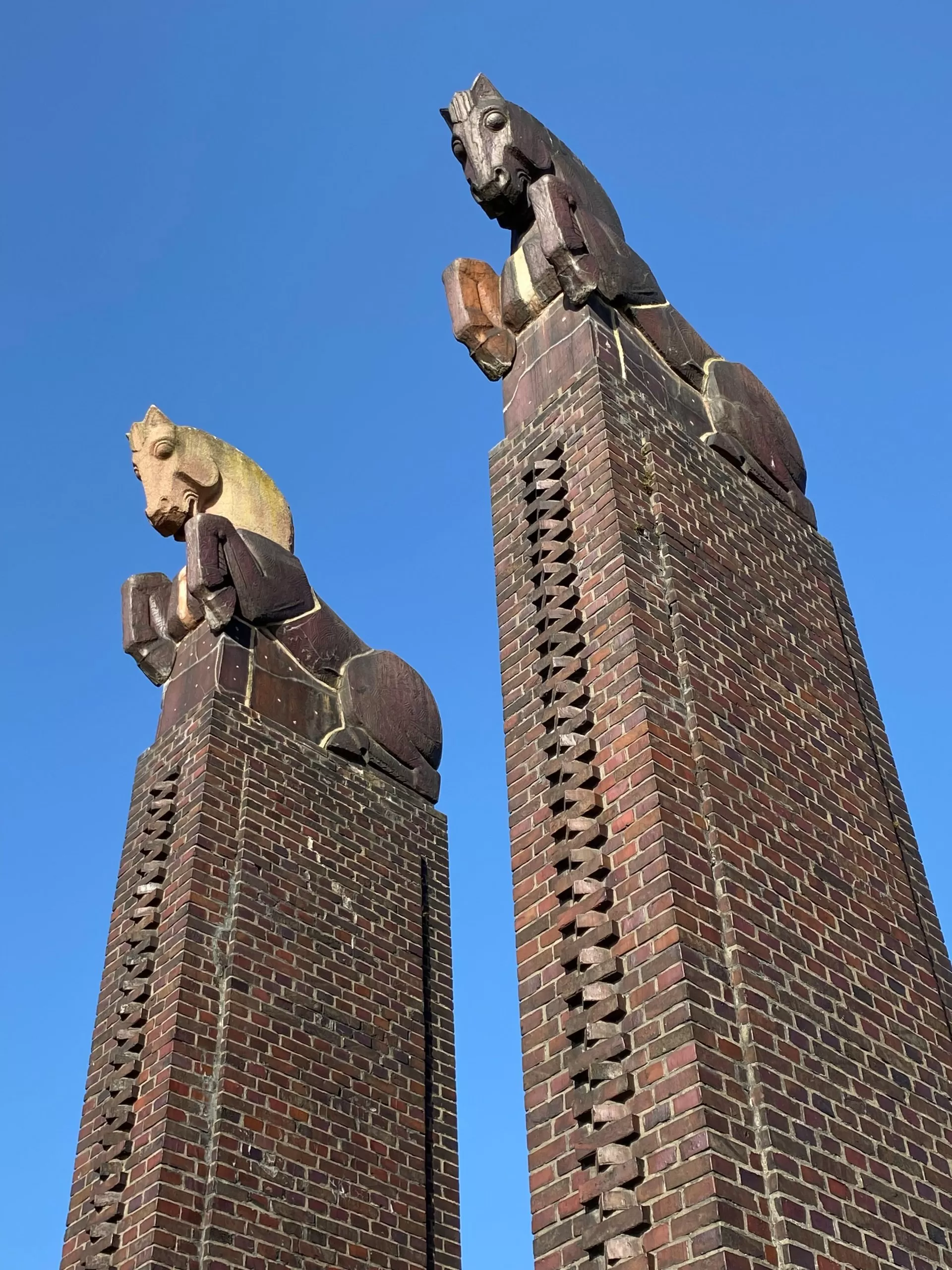
Pferdetor, 1926-1927. Design: Albin Müller. Photo: Daniela Christmann
1926 – 1927
Design: Albin Müller
Heinrich Heine Square, Magdeburg
The gateway Pferdetor in Magdeburg was built between 1926 and 1927 according to a design by architect and designer Albin Müller.
It is part of the overall complex designed by Albin Müller for the German Theater Exhibition in 1927 and served as access from the former cour d’honneur to the festival and event grounds.
Exhibition building
An extensive ensemble of exhibition buildings in the New Building style was erected on the Elbe island of Werder between 1926 and 1927.
The centerpiece was the Stadthalle (City Hall), which was inaugurated in May 1927 after only eight months of construction.
It is considered one of Johannes Göderitz‘s most important buildings in Magdeburg.
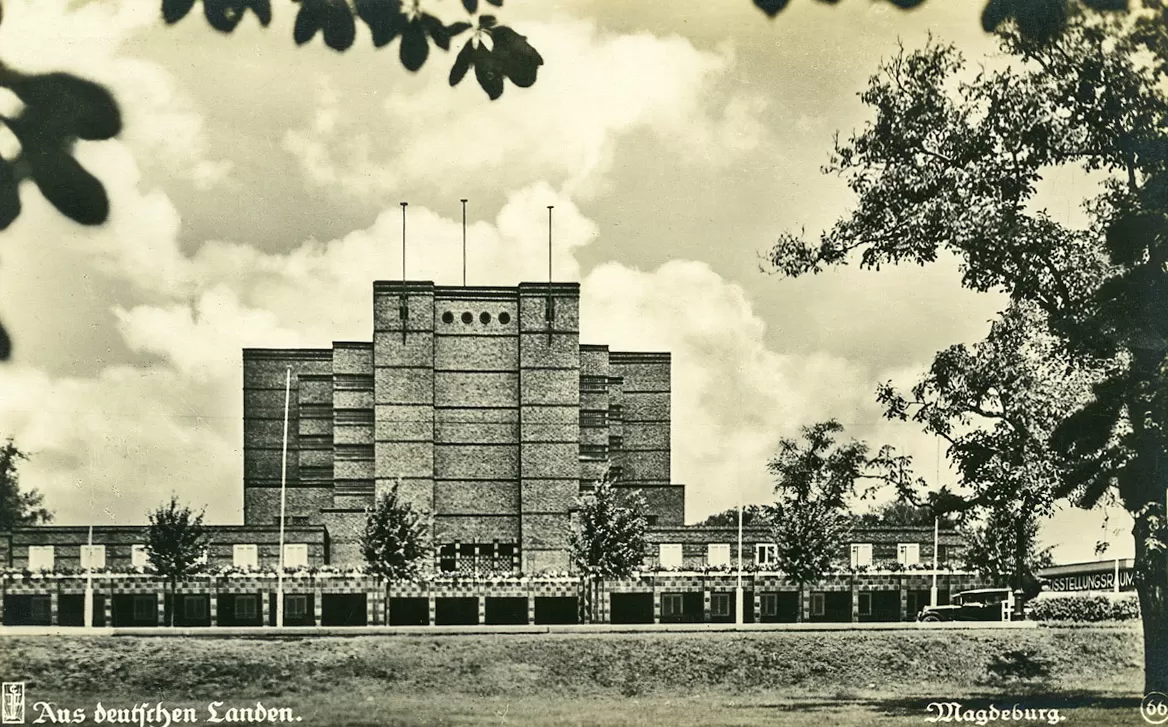
Stadthalle, 1926-1927. Architect: Johannes Göderitz
German Theater Exhibition 1927
Magdeburg hoped to gain international recognition as a city of culture and exhibitions from the German Theater Exhibition, which lasted four and a half months.
Through former city architect Bruno Taut, Magdeburg had gained a reputation in the 1920s as a city of modern architecture and housing development.
The city had already celebrated successes as a trade fair and exhibition location in 1922 with the reconstruction exhibition Mitteldeutsche Ausstellung Magdeburg and in 1925 with the large Reichszuckerausstellung.
The overall complex designed by Albin Müller integrated the large exhibition halls that had already been built in 1922 for the Central German Exhibition Magdeburg (MIAMA).
For the exhibition, an exhibition center with a town hall, exhibition halls, an experimental stage, a floating stage and a 61-meter-high observation tower (today’s Albinmüller Tower) was built in Rotehorn Park between Sternbrücke and Adolf-Mittag-See.
An open-air stage was located in Fort XII. In the northern part of the site, east of the Magdeburg lift bridge, an amusement park with a roller coaster was set up. The exhibition logo was designed by Karl Schulpig.
Löwentor (Lion Gate) and Pferdetor (Horse Gate)
The Pferdetor is a further development of the Löwentor planned for Darmstadt’s Mathildenhöhe.
The Löwentor goes back to the main gate of the 4th exhibition of the Darmstadt Artists’ Colony in 1914 on the Mathildenhöhe, where the lion sculptures made of cast concrete stood on six double columns made of cast stone with Ionic capitals.
Grand Duke Ernst Ludwig had it erected for the 25th anniversary of the artists’ colony in 1927. It consists of six clinker pillars designed by Albin Müller, on which six lion sculptures, already created by Bernhard Hoetger in 1914, were placed.
At the end of the exhibition, the main portal was dismantled and put into storage.
Today the Löwentor forms the entrance to the Rosenhöhe Park in Darmstadt.
The gates between the pillars are decorated with relief panels, which the Darmstadt artist Hermann Tomada made in 1967 as replicas after the originals by Bernhard Hoetger.
Saxon Steed
Instead of the lions, heraldic animal of the Grand Duchy of Hesse, Albinmüller resorted to the so-called Saxon Steed in Magdeburg. As part of the Kingdom of Westphalia under Jérôme Bonaparte, the city of Magdeburg last bore it in its flag, but it had already played a role as a heraldic element in the early tribal duchy.
The Prussian province of Saxony, formed in 1815, was divided into the administrative districts of Erfurt, Magdeburg and Merseburg in 1816.
From 1944 until the end of the war in 1945, the Magdeburg government district formed the province of Magdeburg, which became the Magdeburg government district of the state of Saxony-Anhalt on July 23, 1945.
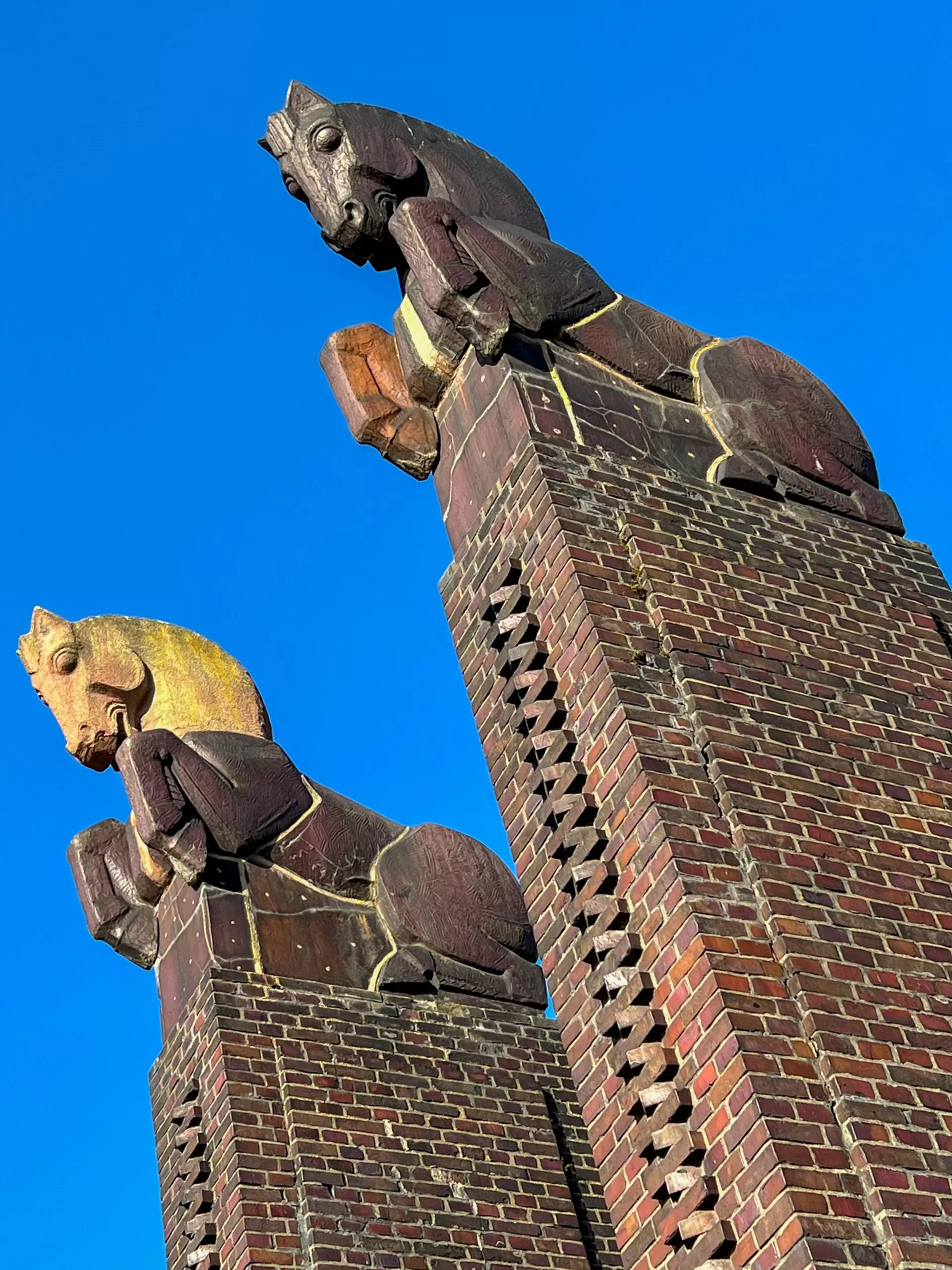
Pferdetor, 1926-1927. Design: Albin Müller. Photo: Daniela Christmann
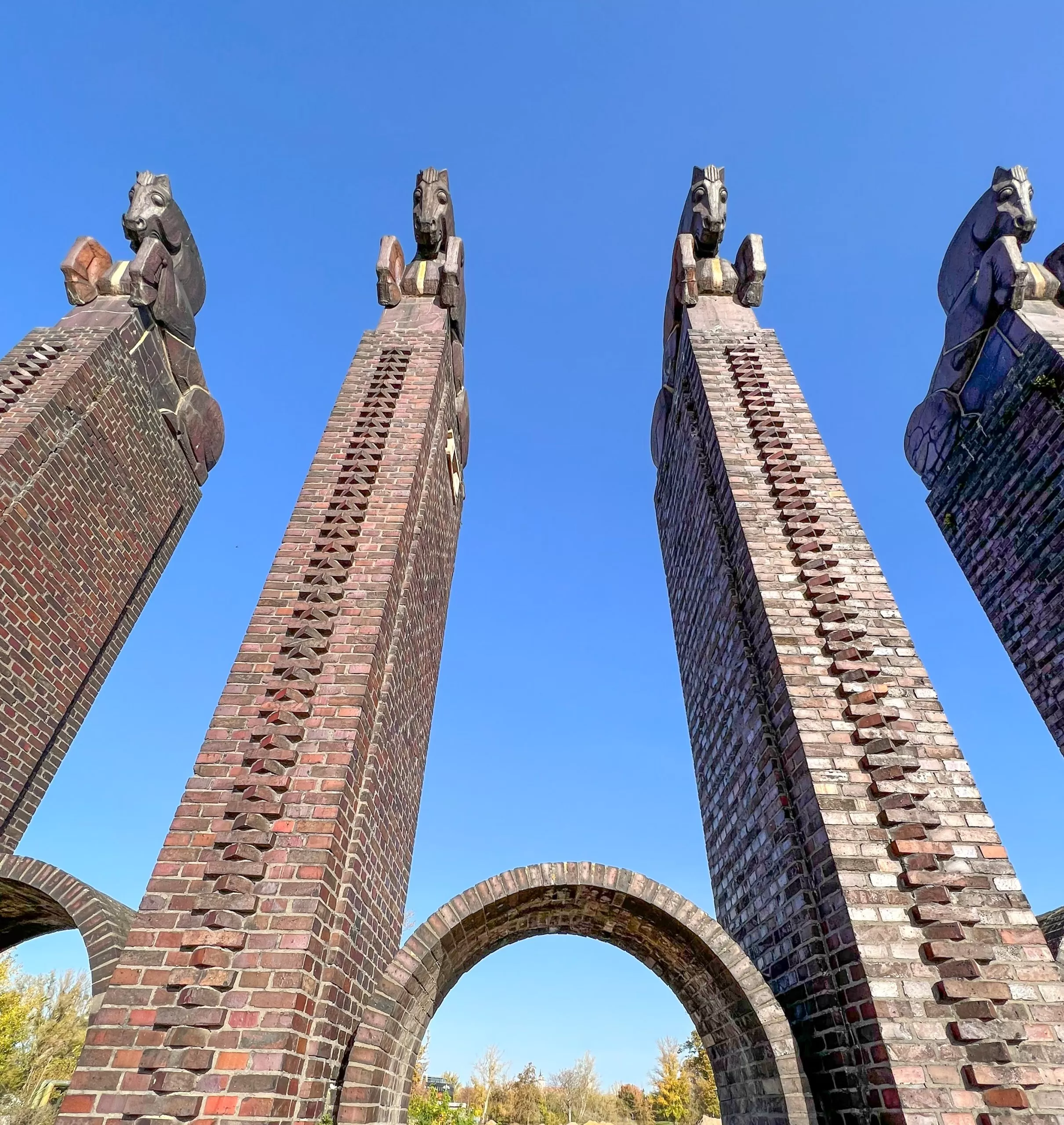
Pferdetor, 1926-1927. Design: Albin Müller. Photo: Daniela Christmann
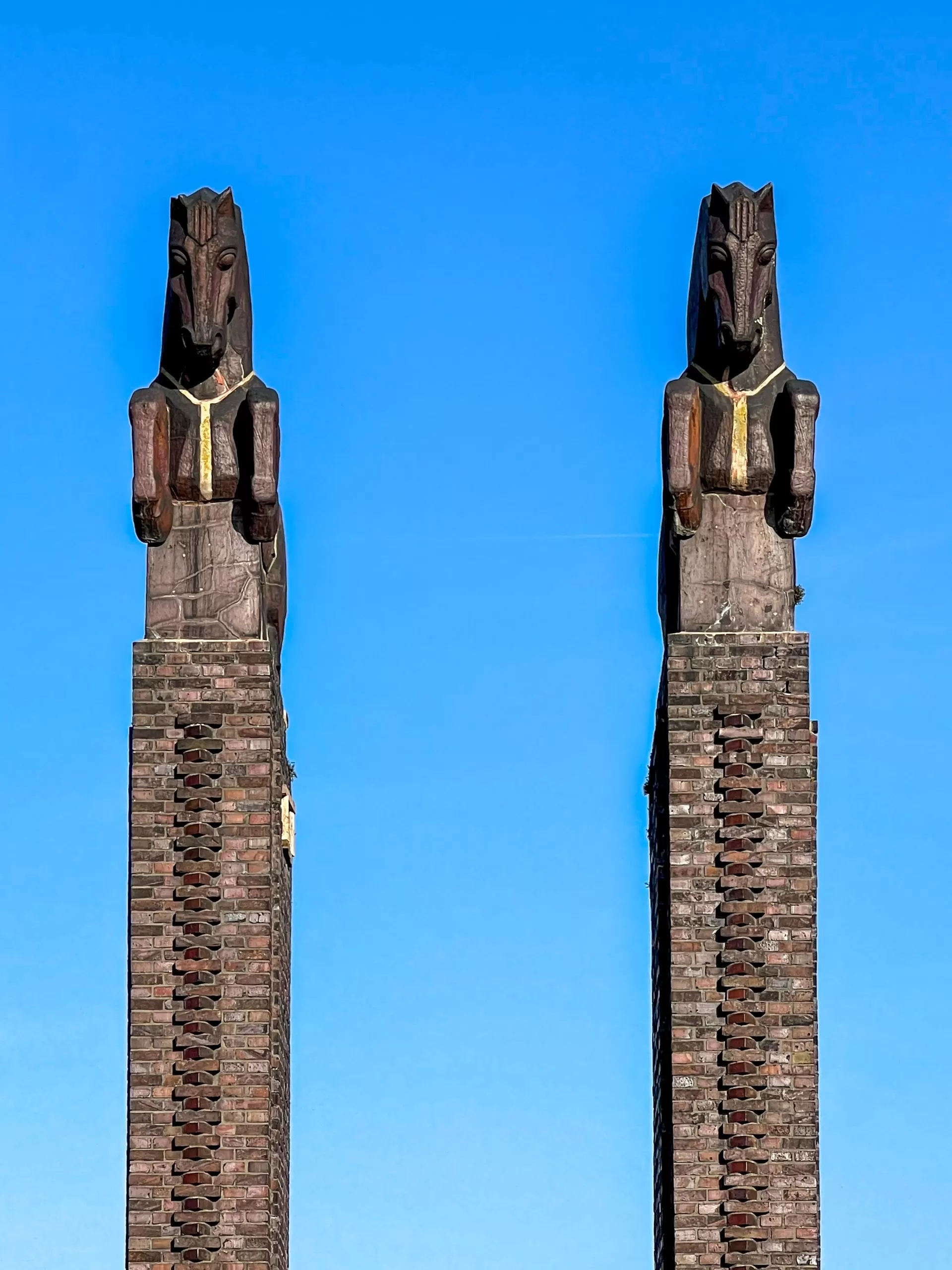
Pferdetor, 1926-1927. Design: Albin Müller. Photo: Daniela Christmann
Design of the Pferdetor
Unlike the Löwentor, whose passageways are connected by a crossbar of heavy relief doors, the Magdeburg Gate has delicate barrel vaults between the ten-metre-high clinker piers.
The shape of the necks of the ceramic horse figures pausing in the levade echoes the arched form between the piers.
Completion
In his memoirs, Albin Müller describes the completion of his project: “I received the clinker bricks for the pillars as a gift from the brick factory. The brickwork was provided free of charge by the Gorgas construction company, and the horse sculptures were supplied free of charge by the Kiel Ceramic Factory as advertising pieces. Twice – on Sundays – I was in Kiel, in order to participate decisively in the natural-size model of the horses, which was manufactured after my small model.”
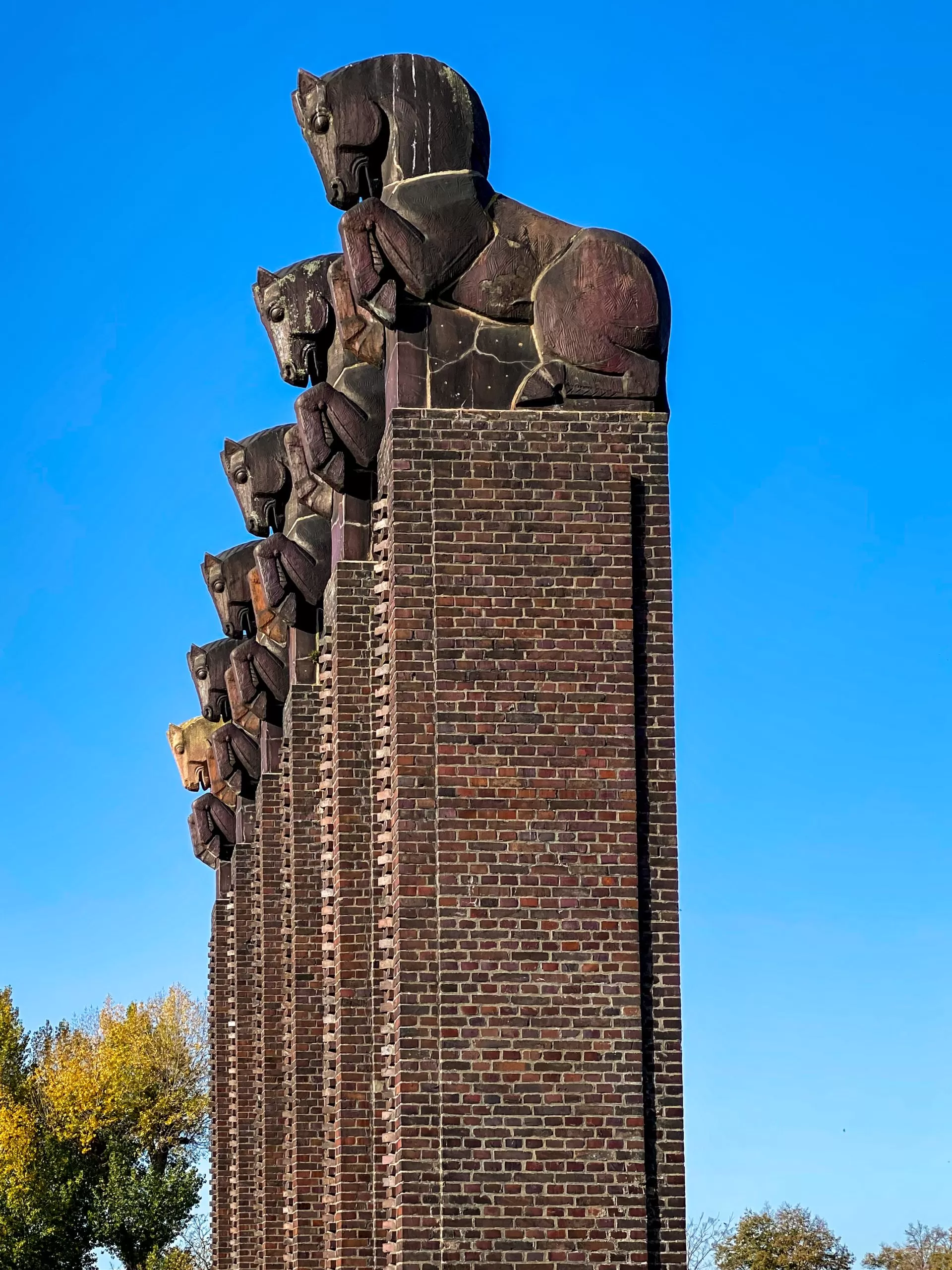
Pferdetor, 1926-1927. Design: Albin Müller. Photo: Daniela Christmann
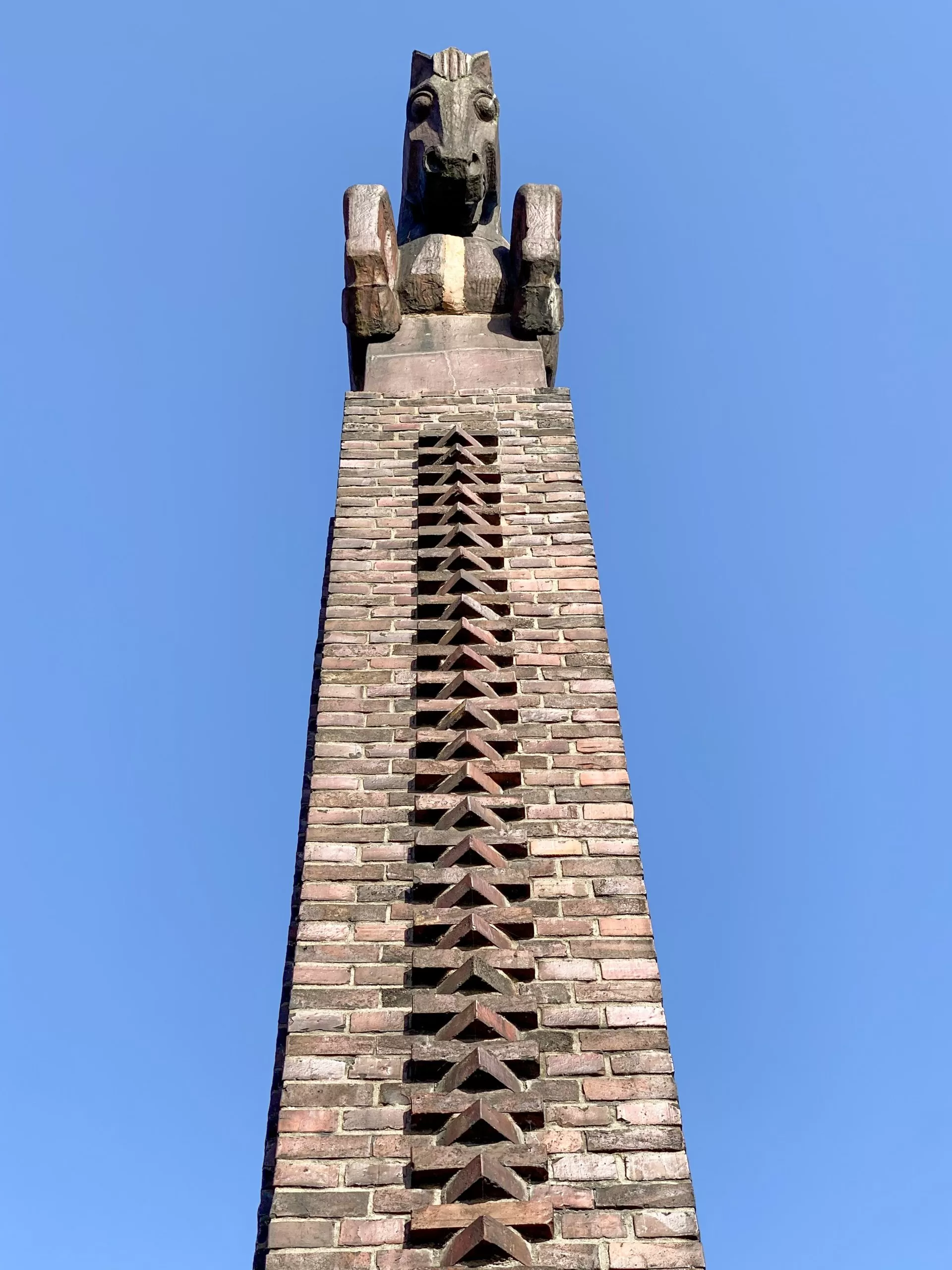
Pferdetor, 1926-1927. Design: Albin Müller. Photo: Daniela Christmann
War Damage and Reconstruction
The buildings constructed for the exhibition were severely damaged during World War II. The exhibition halls, the experimental stage and the pavilions at the Sternbrücke were completely destroyed.
The town hall, Albinmüller Tower, Horse Gate and fountain were rebuilt and renovated.

